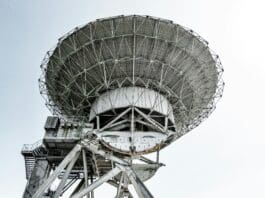This post is also available in:
 עברית (Hebrew)
עברית (Hebrew)

Unmanned air systems (UAS) are very active in controlling the border between the U.S and Mexico
Since 2000, the number of Border Patrol agents on the 1,954-mile U.S.-Mexico border has more than doubled, to surpass 18,000, and fencing has increased nine times — to 700 miles. Some members of Congress and border state lawmakers are calling for more border agents and more fencing.
According to Home Land Security News Wire, the Obama administration is looking to drones to help reduce the number of illegal immigrants and drugs entering the United States, while simultaneously shifting resources and agents to parts of the border where illegal activity is highest.
The Christian Science Monitor reports that since March 2013, the U.S. government has operated about 10,000 drone flights, covering 900 miles along the border, mostly over remote mountains, canyons, and rivers.
Register to iHLS Israel Homeland Security
The drones fly out of the U.S. Army Intelligence Center at Fort Huachuca in Sierra Vista, or Corpus Christi, Texas. They operate at altitude of 19,000 to 28,000 feet, and between twenty-five and sixty miles of the border.
Nearly half the U.S.-Mexico border is now patrolled by MQ-9 Reaper (aka Predator B drones) with high-resolution video cameras that send footage to analysts who then identify small changes in the landscape — the tracks of a farmer or livestock, or those of illegal immigrants or vehicles used to smuggle drugs into the country.
Generally speaking, Ninety-two percent of drone missions have showed no change in terrain, but 8 percent have raised enough concerns to dispatch agents to review the changes. Four percent of the reviews have been false alarms, likely the tracks of farmers or cows, and 2 percent are inconclusive. The remaining 2 percent show evidence of illegal crossings from Mexico, which then leads to closer monitor via ground sensors.



